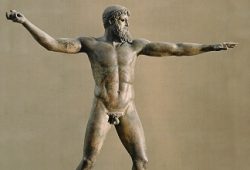Five Fascinating Facts about the Kama Sutra
 Posted On
Posted On
1. The Kama Sutra isn’t a ‘sex manual’. Or at least, it’s not just that. In fact, only around 20% of the Kama Sutra concerns sexual positions – one section of the seven that make up the whole book. The section that does concern sexual positions discusses the use of nails (fingernails, presumably) in the bedroom, biting, moaning, and much else. One passage denounces oral sex as immoral, before going on to give detailed instructions as to how to perform it! Those wanting a more ‘full-on’ Indian sex manual might try the Ananga Ranga, composed in the fifteenth or sixteenth century. You know, if that’s your sort of thing.

2. The other six sections give advice on a whole host of subjects. The rest of the Kama Sutra concerns such things as: correct conduct, the acquisition of useful knowledge, how to get yourself a wife, how to make money, as well as making lemonade and how to teach parrots to talk. Which is all a long way from the wheelbarrow position, we’re sure you’ll agree.
3. Even the erotic bits of the book were based on a solid Indian literary tradition, well established even when the Kama Sutra was written. The author of the Kama Sutra was a man named Vatsayayana. When he lived and worked is not known for sure, but it was possibly during the fourth century AD. Early on in the book, Vatsayayana acknowledges that he is drawing on a noble tradition in Hindu writing: before Vatsayayana there had been numerous erotic writers, including Charayana and Auddalaki, whose works Vatsayayana was aiming to improve upon. (Sadly, none of Charayana or Auddalaki’s erotic works have survived.)

4. An English translation of the Kama Sutra was produced by an eccentric Victorian explorer. Sir Richard Francis Burton (pictured right) also translated the Arabian Nights into English, adding helpful footnotes explaining some of the more unusual sexual practices outlined in the tales. So it’s perhaps little surprise that Burton, given his interest in both the exotic and the erotic, was instrumental in bringing about an English translation of the Kama Sutra. It was printed in English in 1883 – we say ‘printed’ rather than ‘published’ because any publisher would have been charged with obscenity, so willing readers had to pay for a privately printed copy. In fact, although Burton usually gets the credit for the translation, it was largely the work of Burton’s friend and fellow orientalist, the wonderfully named Forster Fitzgerald Arbuthnot (1833-1901), working in collaboration with Indian archaeologist Bhagwan Lal Indraji and a student named Shivaram Parshuram Bhide.
5. The Kama Sutra was banned in Britain until 1963. Its publication – proper publication, that is, rather than private printing – was in fact only made possible following the historic ‘Chatterley trial’ of 1960, when Penguin Books were cleared of the charge of obscenity for publishing D. H. Lawrence’s novel Lady Chatterley’s Lover. The permissive age that followed saw the first legal publication of Burton’s translation (sorry, Arbuthnot, Indragi and Bhide’s translation).
Read about: The Kama Sutra Positions You Didn’t Know Existed


